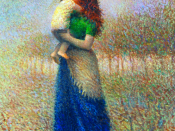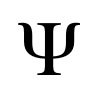Background and Literature Review
Jean Piaget proposes that the cognitive development of an individual can be classified into four stages: sensorimotor, preoperational, concrete operational and formal operational. His theories help us to understand how children construct more advanced understandings of the world, emphasizing that the extent and ability to interact with the external world differs according to the stage of development. One such developmental task is the conservation task, examining a child's ability to "identify that certain physical characteristics of objects remain constant despite their outward appearance changes" (Berk, 2009). Dimensions of conservation include number, mass, liquid and weight. I will be examining the descriptors of Piaget's preoperational stage through the conservation of number task. At the preoperational stage (2-7 years old), Piaget proposes that children are not cognitively developed enough to succeed at conservation tasks because their thinking is not governed by principles of centration and reversibility yet.
Methodology
I elicited help from 2 children (1 girl, 1 boy) in a Sunday school nursery class of ages 5 and Anna; my tutee (1 girl) aged 8.
The nursery children fall into the preoperational stage while Anna falls into concrete stage. I used jewel gems biscuits to replace coins (Figure 1). Two parallel rows of biscuits were placed in one-to-one correspondence, with five biscuits in each row. One row consisted of only green biscuits while the other of only yellow biscuits. This was to prevent confusion and for easier reference to which rows the children were indicating to when they answered or when I asked questions.
The task was administered separately to each child. When the biscuits were presented originally and evenly spaced, I asked them the question - "Can you tell me, does this row have more biscuits (points to first row), does this row have more biscuits (points...


